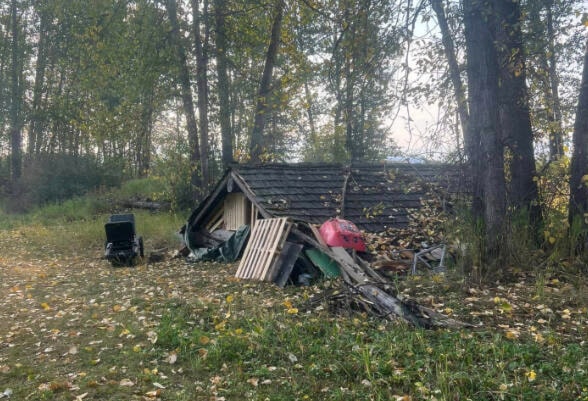The District of Houston has started enforcing rules at Bymac Park, including limiting the days people can camp there.
A growing community at the campground beginning this spring of people staying longer than the permitted 14 days had residents and the District worried about ongoing activity and subsequent effects on the community and visitors.
But while the District has been enforcing park rules, it has also made alternate accommodation provisions for those who can no longer stay at the park, said District of Houston chief administrative officer Michael Dewar.
“We have resourced an area of District-owned property just outside of Bymac Park with outhouses and garbage service. We are not charging fees for those who are visiting,” he said.
“This is a temporary measure taken to support community members and at the same time allow Bymac Park to continue serving as a premier destination on the Morice River for tourists and recreation seekers.”
Enforcement of park rules and use of the campground sites came up at council several times in recent months.
Those rules range from the requirement to have pets on a leash at all times — and to clean up after them — to the need for all vehicles and trailers to have active licence plates and insurance.
The maximum stay per campsite is to be 14 consecutive days and excessive noise is not permitted between 11 p.m. and 7 a.m. Monday to Saturday and 11 p.m. to 9 a.m. Sundays and statutory holidays. The noise regulations are contained in a municipal bylaw.
Other rules to be posted include leaving a campsite in the same condition that it was found upon arrival and storing food in vehicles or airtight containers to avoid attracting bears or other wildlife.
The District has also taken action at other temporary shelter sites, citing safety and worries about fire hazards.
“The District is aware of the improvised shelter behind the industrial park and has taken remedial action to clean up the location due to fire hazard related safety concerns,” said Dewar.
“Individuals who were frequenting this location were notified prior to clean up.”
A second temporary shelter location in Alexandria Park was also cleared out and individuals at the location were notified prior to the clean up, Dewar added.
The District has taken one step in view of the lack of housing within its boundaries and that’s to secure a grant to hire someone find long-term ways of dealing with both housing and social challenges.
“We anticipate that these contract services will provide necessary capacity and expertise to help identify and implement solutions in our community,” said Dewar.
“There will be extensive community engagement and consultation as we move through this process.”
The person or persons to be hired comes via a $182,700 grant provided by the provincial government and funneled through the Northern Development Initiative Trust in Prince George.
The District has added $20,300 of its own money for a total project cost of $203,000.
One goal of the person or persons to be hired is finding a way to increase the quantity and variety of housing in Houston.
In all, the province has now sent more than $15 million to the Northern Development Initiative Trust under a program called the Northern Healthy Communities Fund for distribution among communities affected by the Coastal GasLink natural gas pipeline and the LNG Canada natural gas liquefaction project at Kitimat.
“The Northern Healthy Communities Fund supports initiatives that assist healthy, sustainable and resilient communities facing rapid and large-scale economic development and associated need for enhanced social service readiness,” a background document indicates.
